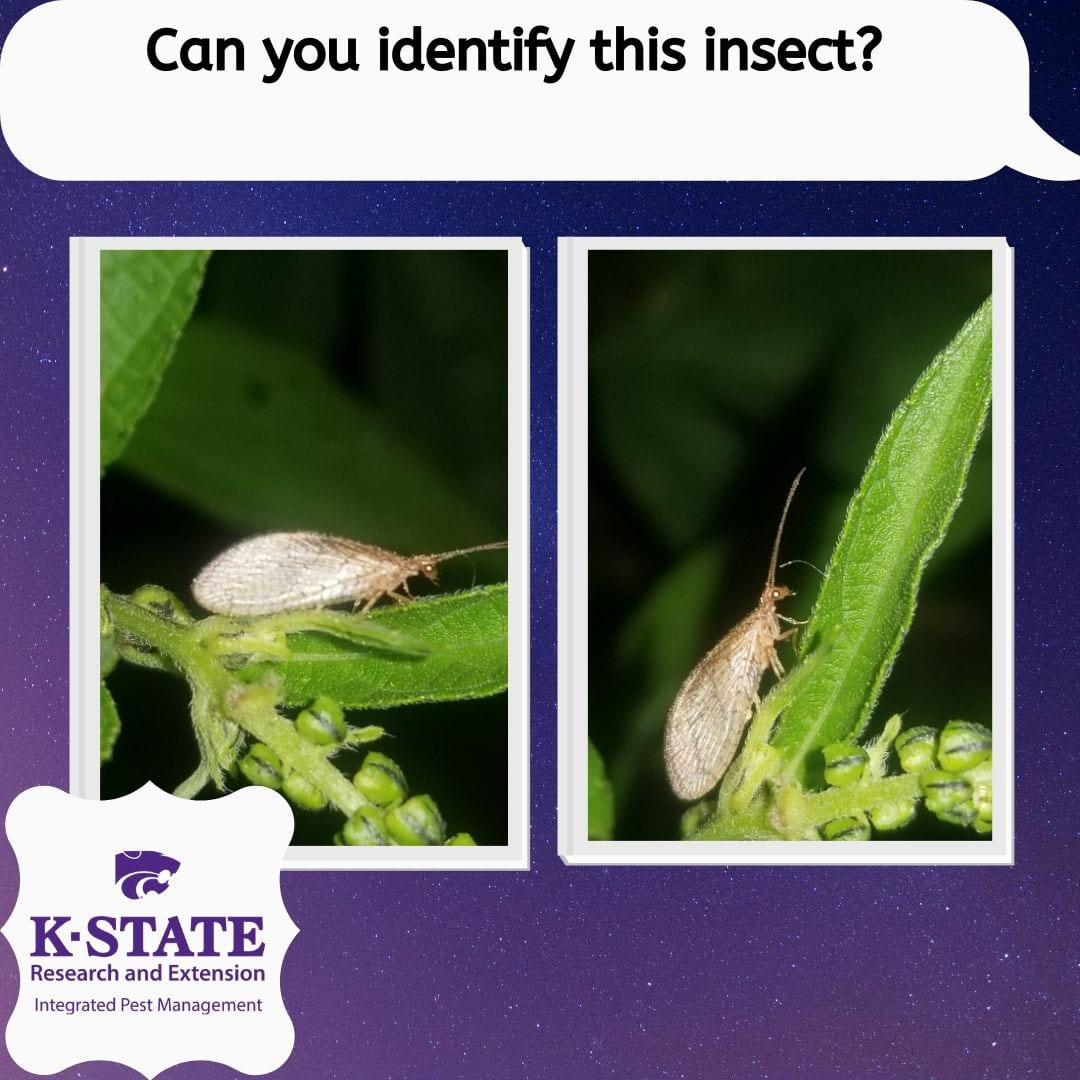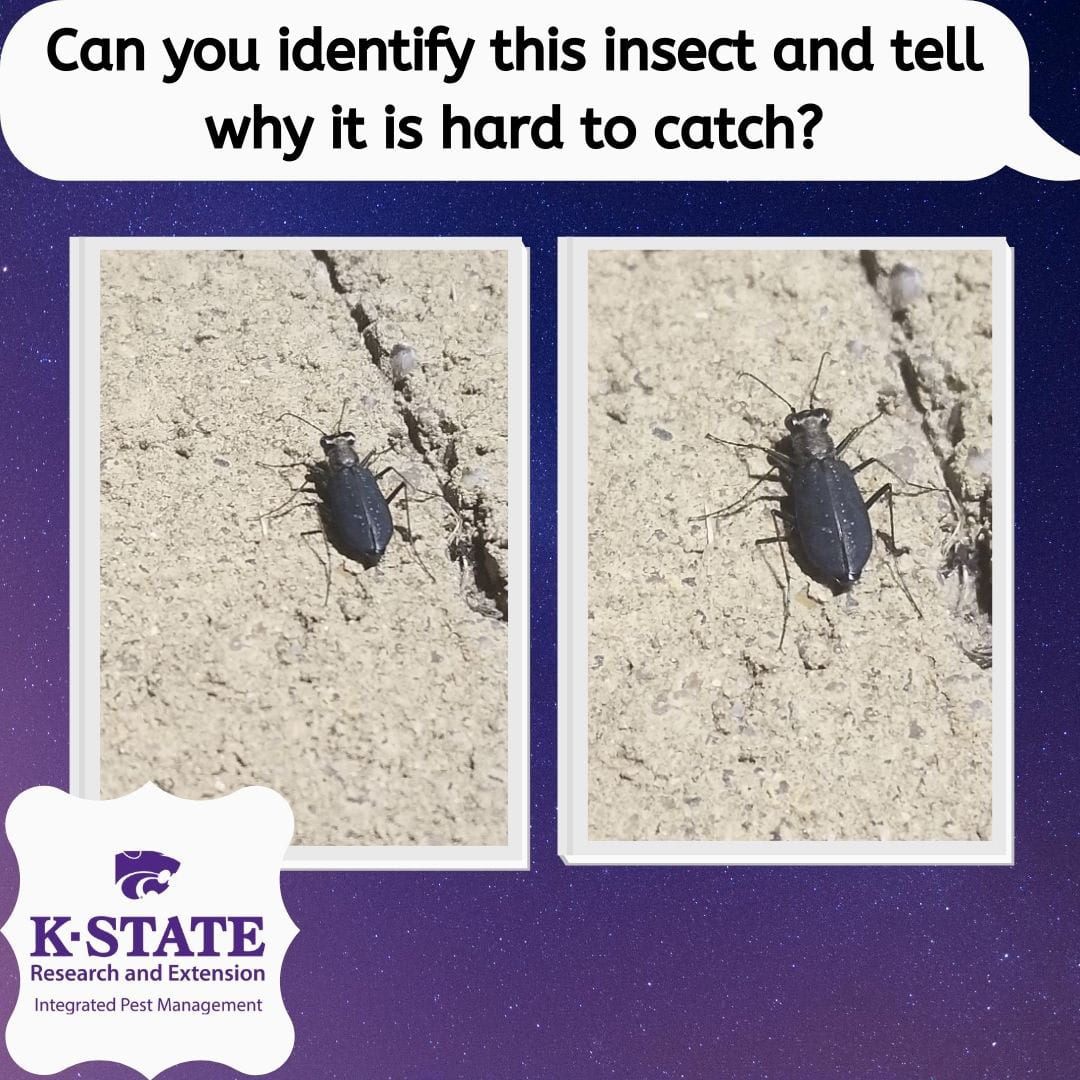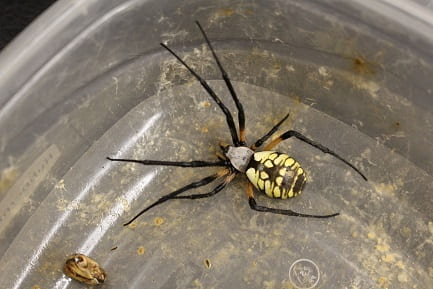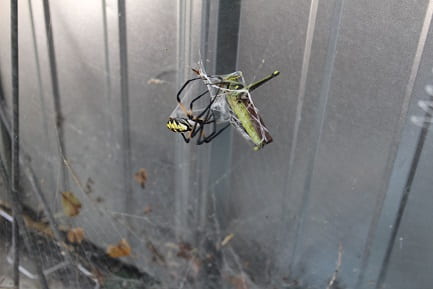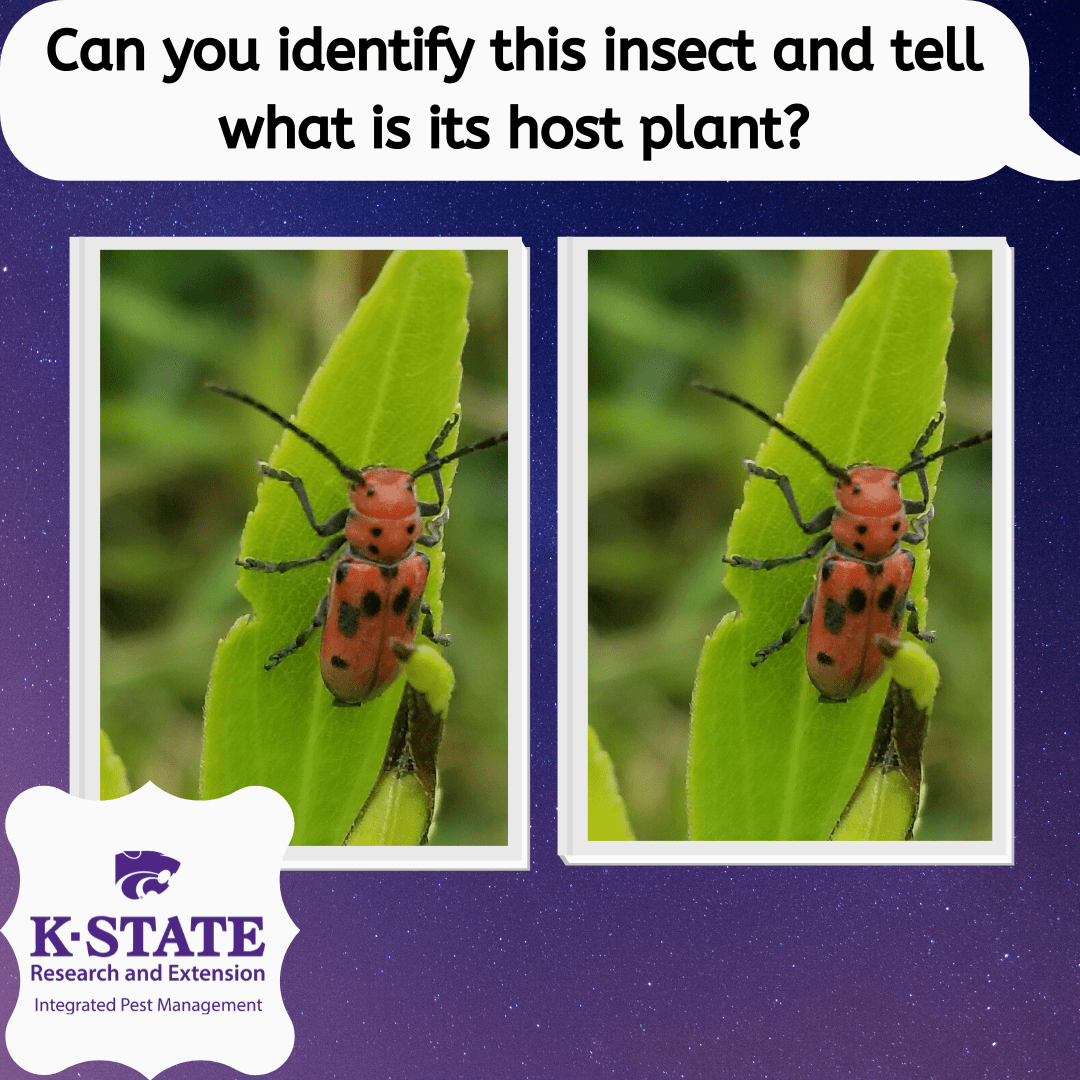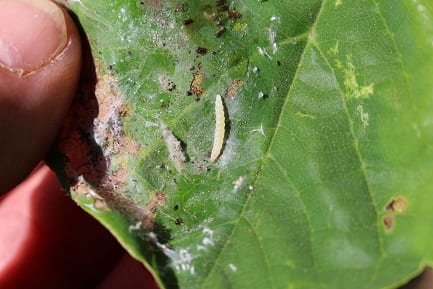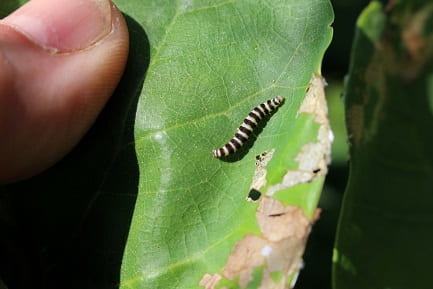–by Dr. Raymond Cloyd
Have you noticed your eastern white pine (Pinus strobus) trees looking like they are covered with snow? Well, the trees are not covered with snow—they are infested with the pine bark adelgid (Pineus strobi). The pine bark adelgid is an insect pest that primarily feeds on eastern white pine, but will also feed on Austrian (Pinus nigra), and scots (Pinus sylvestris) pines.
Pine bark adelgid adults are approximately 3.0 mm (1/9 inch) in length, black, wingless, and covered by a white, fluffy wax (Figure 1).

Figure 1. White Woolly Tufts Covering Pine Bark Adelgids (Raymond Cloyd, KSU)
Immature females that have been overwintering mature in April and lay eggs on the bark of pine trees. Nymphs that emerge (eclose) from eggs are either winged or wingless. Adelgid nymphs and adults possess very long mouthparts (stylets) that allow them to penetrate wood beneath the bark and feed within the phloem (food-conducting tissues). Nymphs secrete large quantities of wax that solidifies into white woolly tufts that cover the body. The woolly white wax produced by pine bark adelgids can cover large areas of pine trees, including the main trunk, branches, and shoots (Figure 2). In addition, pine bark adelgids secrete honeydew, which is a clear, sticky liquid that serves as a growing substrate for black sooty mold.

Figure 2. Woolly White Wax Covering A Branch (Raymond Cloyd, KSU)
Nymphs and adults are most prevalent on the trunk, branches, and shoots of older (over 10 years old) eastern white pines. Furthermore, infestations of pine bark adelgid may be more noticeable on the underside of branches. Pine bark adelgid overwinters as an immature female nymph located on the bark that matures into an adult in spring. There may be several generations per year.
A forceful (high-pressure) water spray can be used to dislodge adelgids from pine trees. Contact insecticides such insecticidal soaps (potassium salts of fatty acids) or horticultural oils (petroleum- or mineral-based) applied from April through May when pine bark adelgids are active may be effective in suppressing populations and mitigating potential damage to pine trees. Dormant oil applications can be made in the fall through spring to kill overwintering nymphs. Thorough coverage of all plant parts is important. Systemic insecticides applied to the soil in early spring may be effective in preventing or minimizing infestations of the pine bark adelgid. There are a number of beneficial insects that feed on pine bark adelgid including ladybird beetles, lacewings, and syrphid fly larvae. However, these beneficial insects may not effectively regulate pine bark adelgid populations to prevent the occurrence of heavy infestations.
